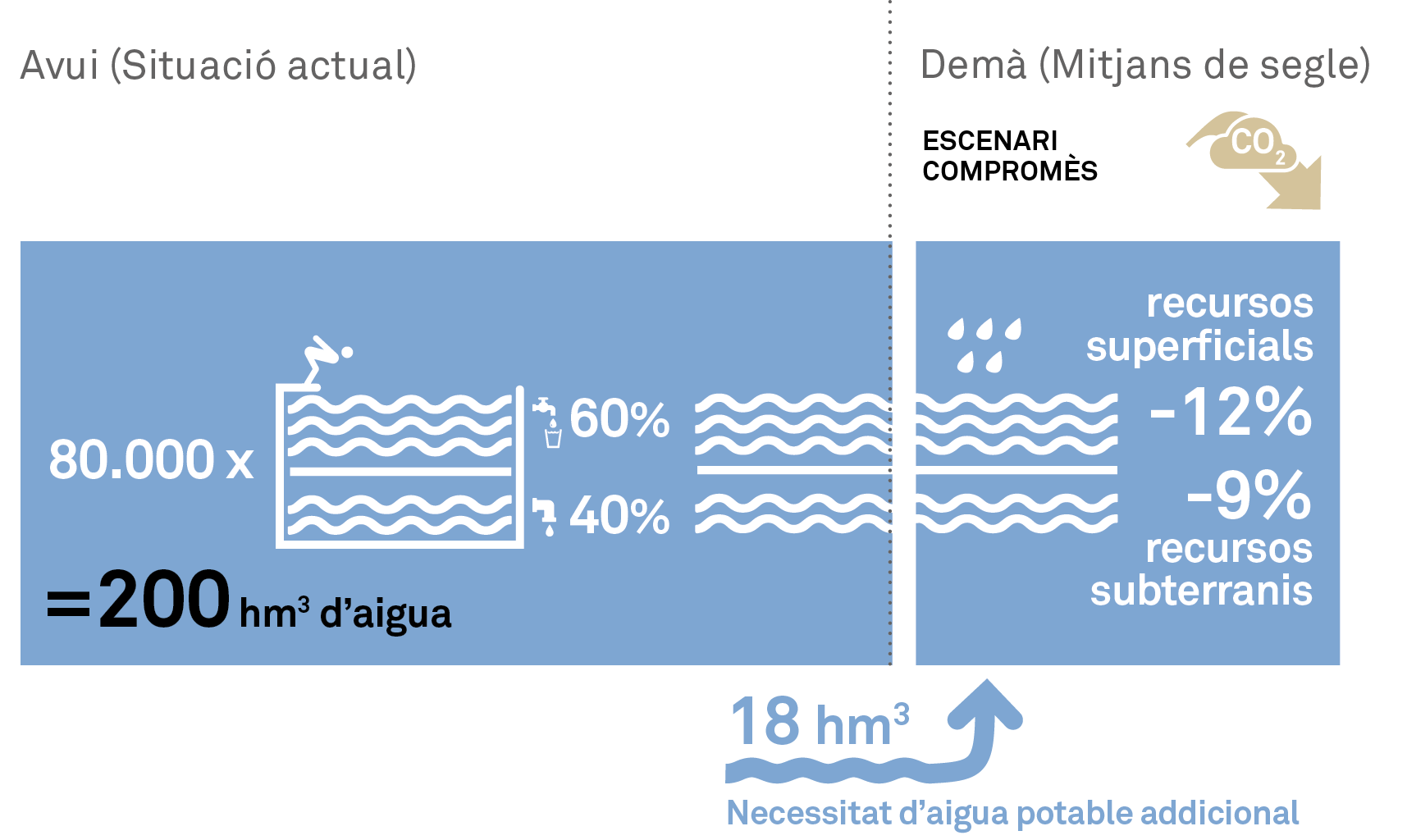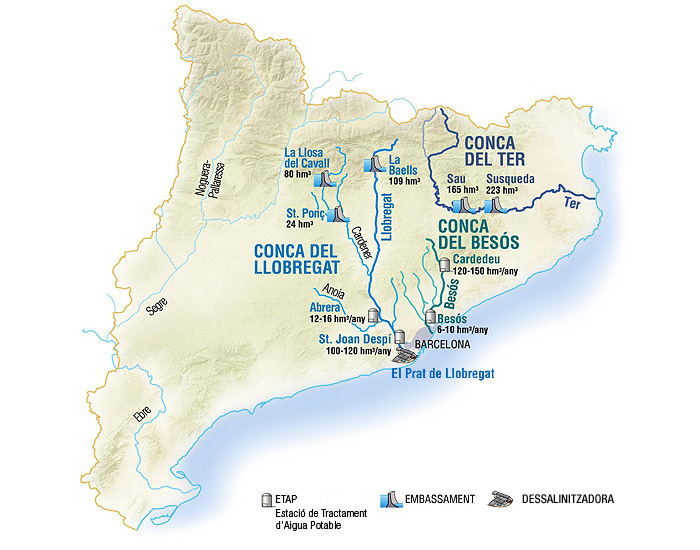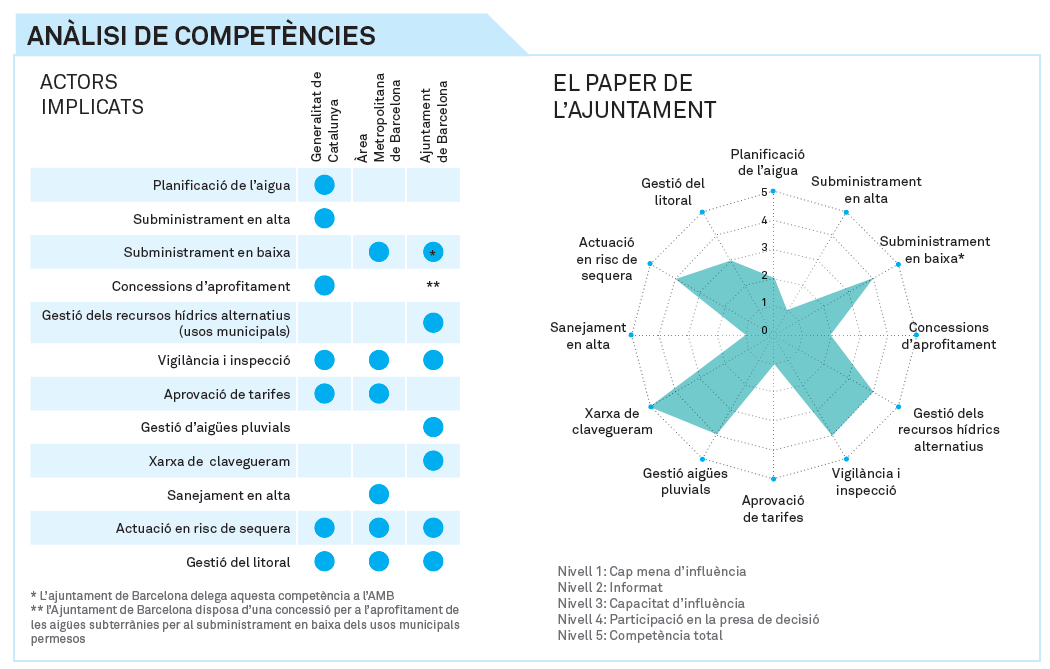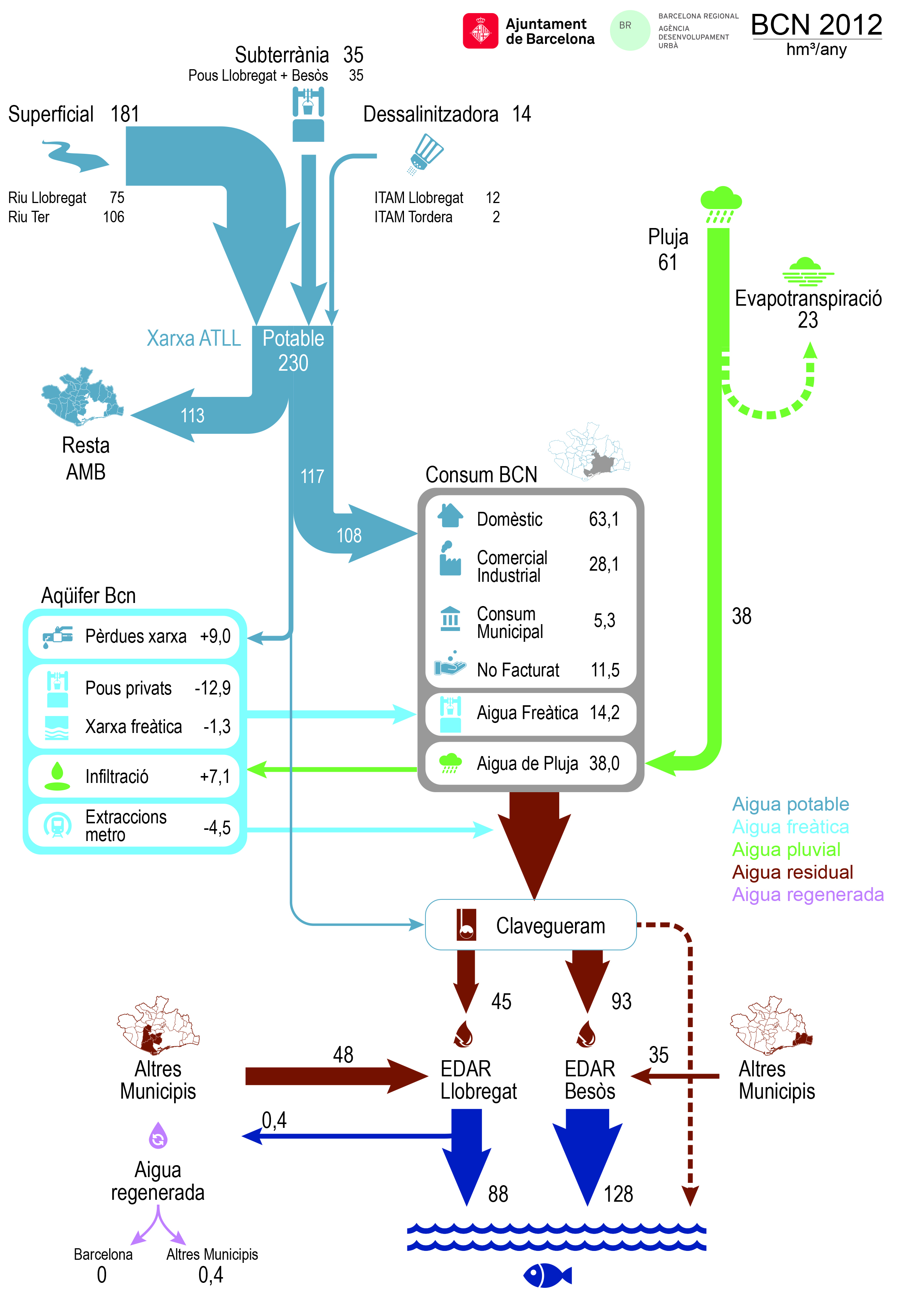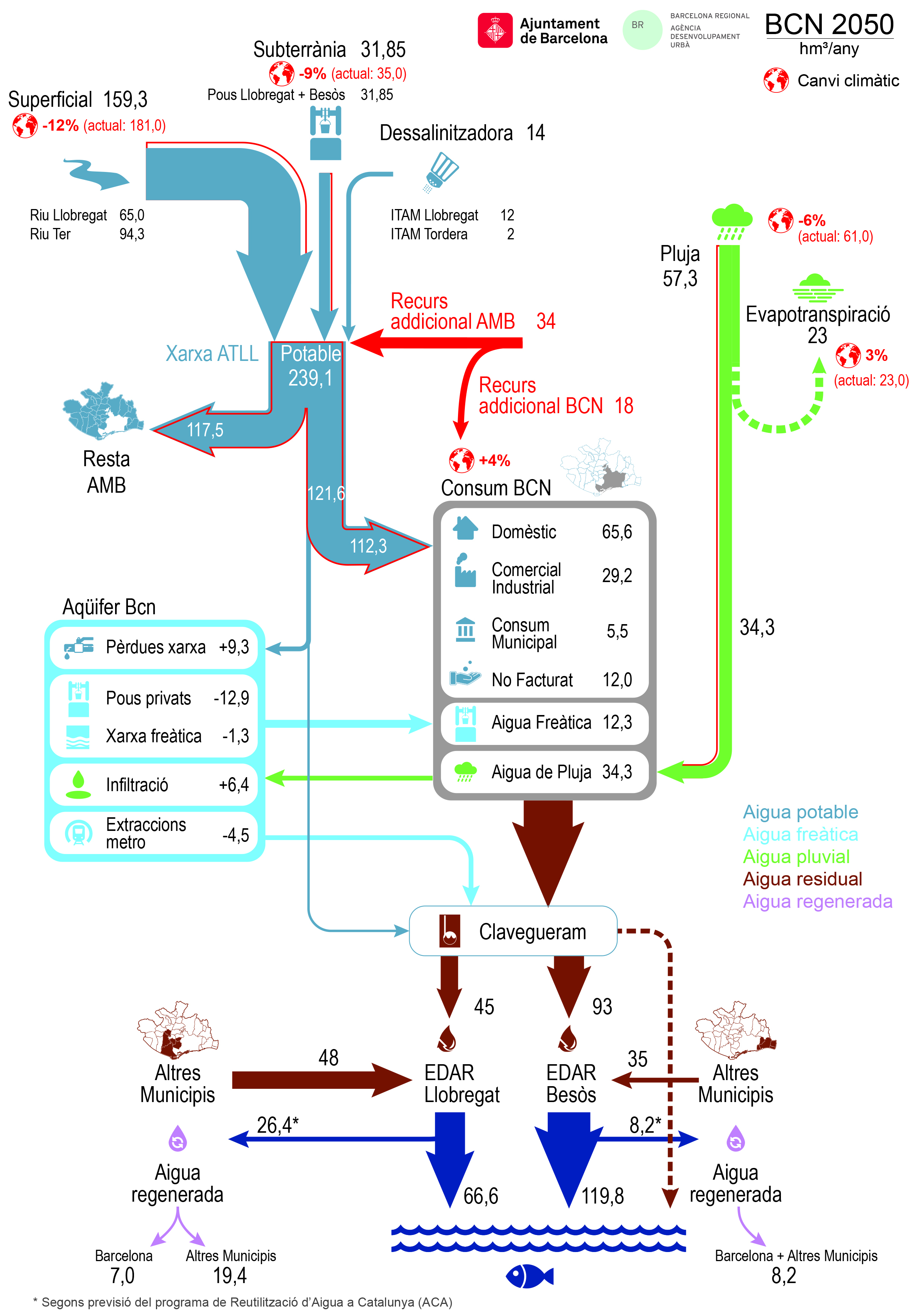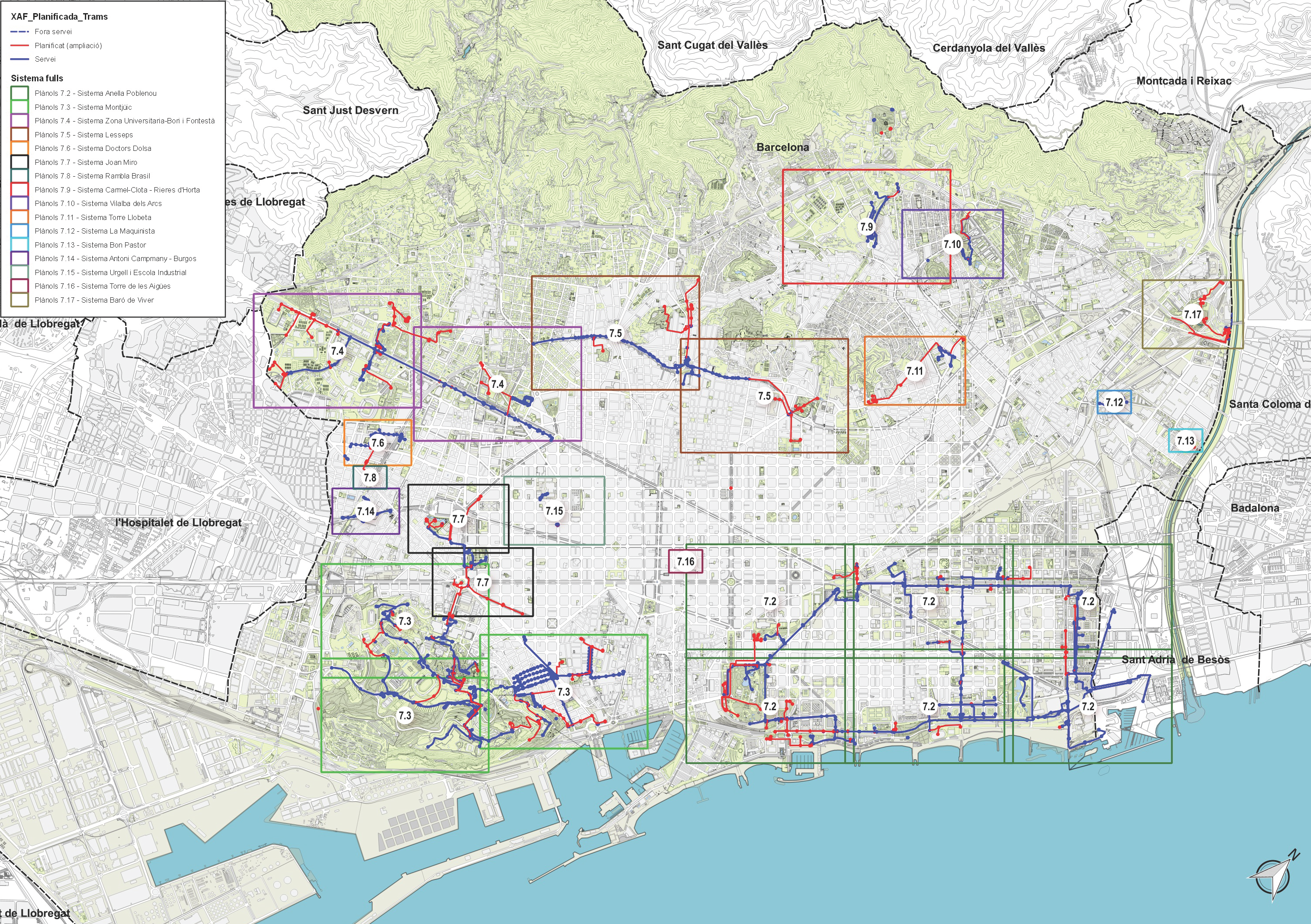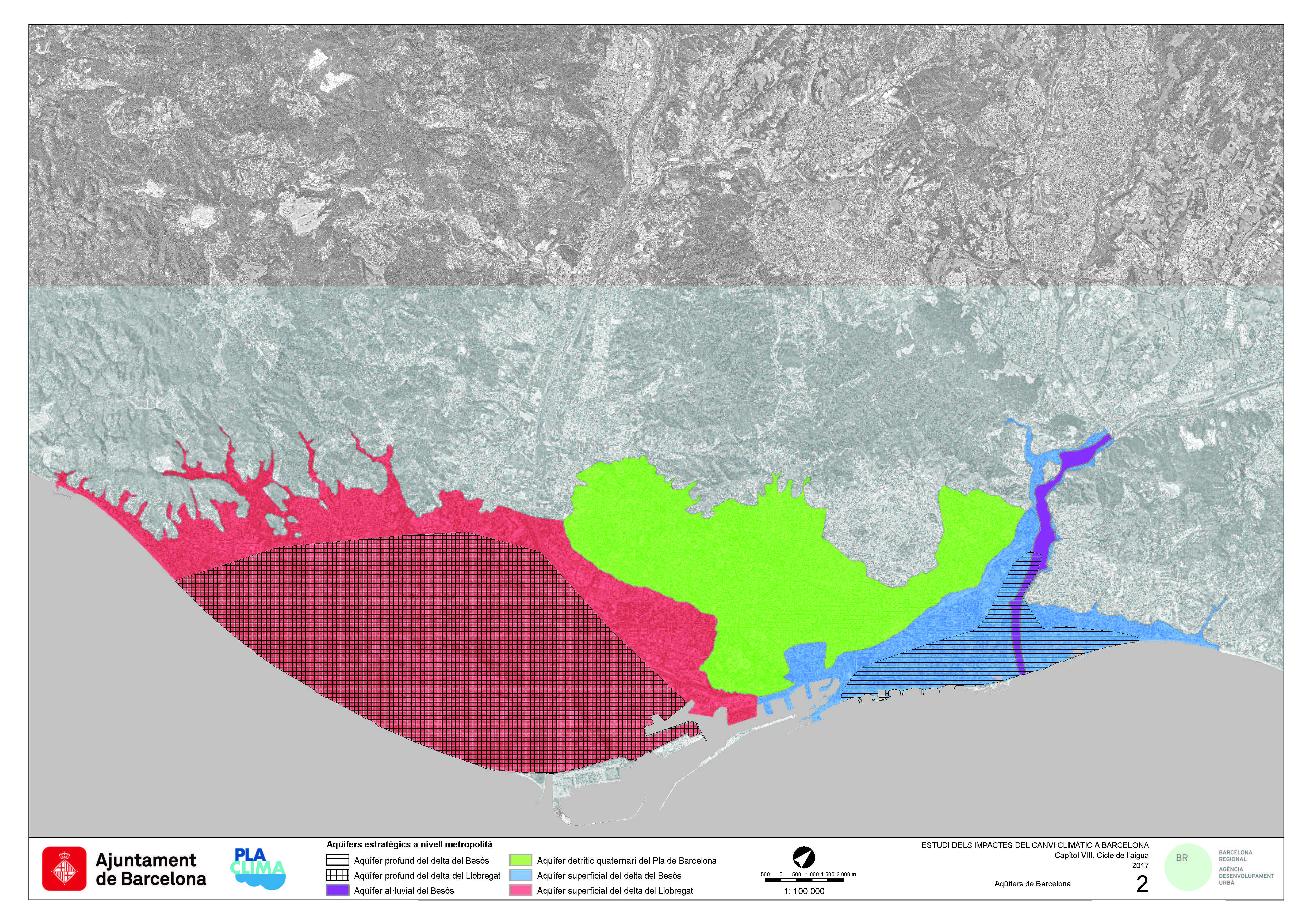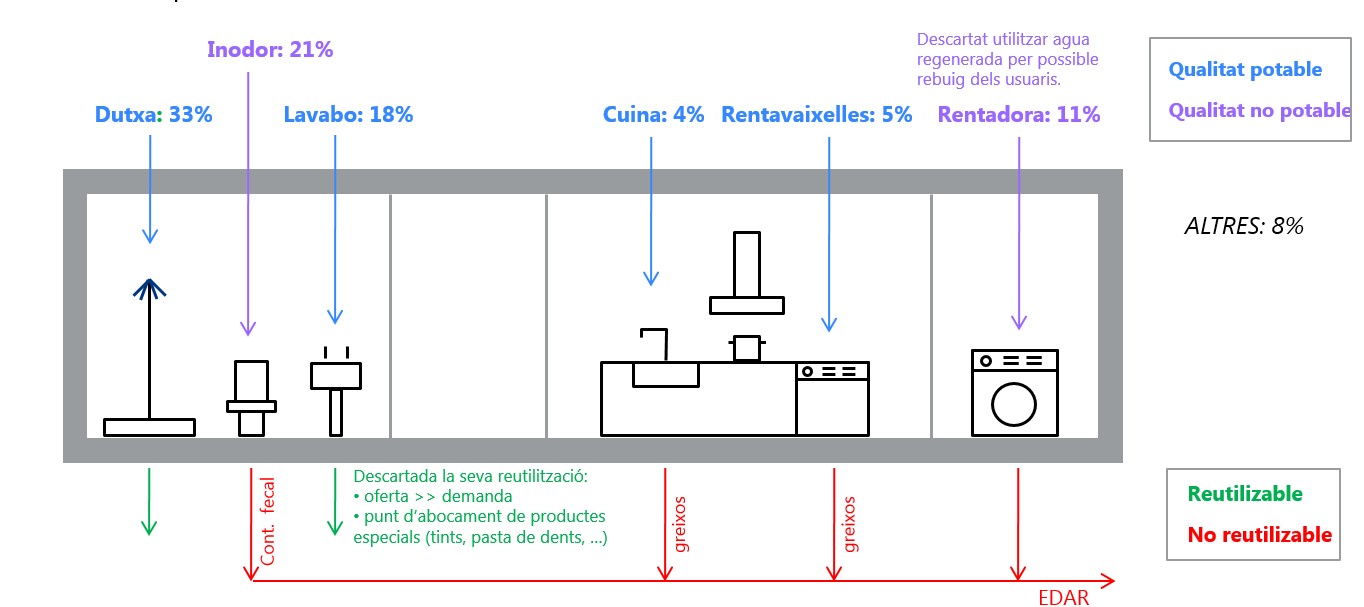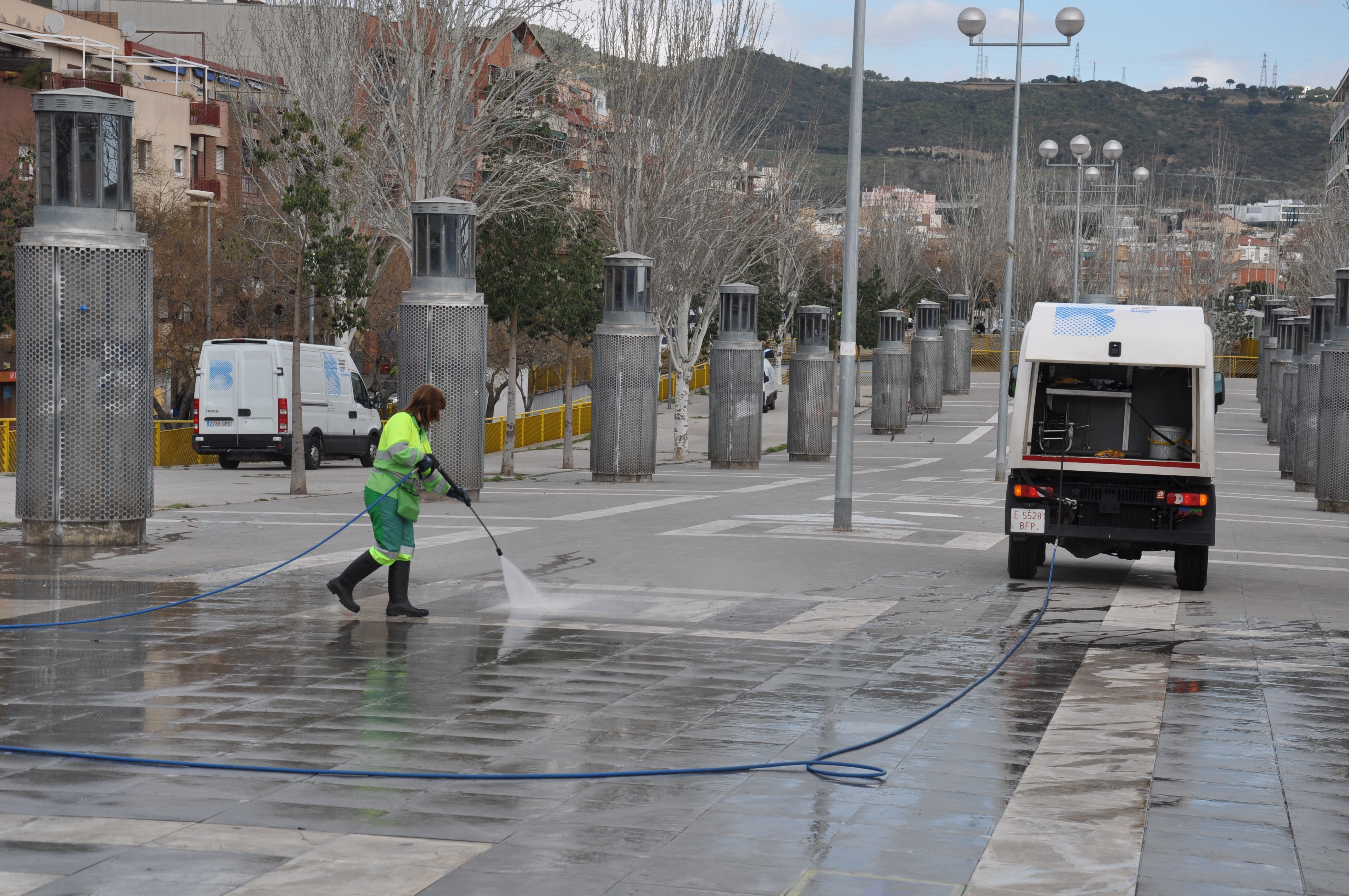Production of drinking water in the Ter-Llobregat network (multi-annual averages). Source: ACA
The irregularity of the Mediterranean rainfall system has meant that over the last 30 years the reserves of the Ter-Llobregat system have been below the drought alert limit, historically situated at 250 hm3, 20% of the time.
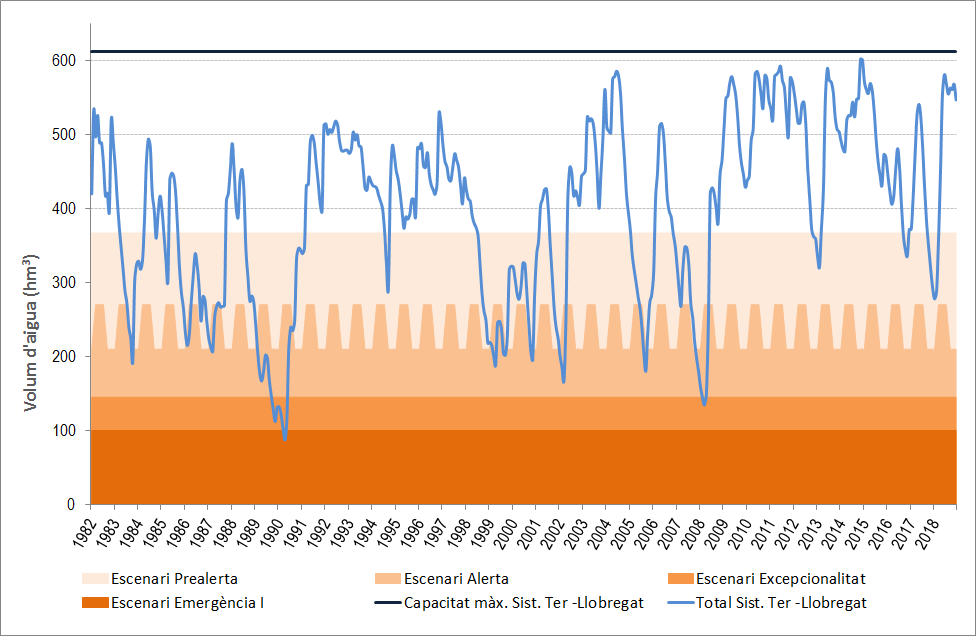
Evolution Ter-Llobregat System (1982-2018) with scenarios from the PES
Rainwater
The natural inflow of rainwater varies year on year due to the variable climate of the area. This makes it a resource that is available at certain, very variable times, making it difficult to take advantage of.
The majority of rainwater becomes run-off water that is collected in the city’s sewerage system. Rainwater also irrigates the city’s green zones or tops up the aquifer through the permeable zones.
On the other hand, a significant amount of rainwater returns to the atmosphere through evapotranspiration.
Groundwater (for non-potable uses)
Much of the groundwater extraction for non-potable uses is from private wells, mainly for industrial uses (for example, the Zona Franca industrial estate). However, there is also a network of municipally-owned wells that extract water for irrigating green spaces, street cleaning, ornamental fountains and municipal facilities. Finally, a considerable amount of groundwater is extracted at various points in the metro network, to prevent the aquifer from damaging the facilities.
Waste water
Wastewater is the main outlet for water in the urban water cycle. This is collected by the sewerage network and transported to the wastewater treatment plant (WWTP) at Besòs, Llobregat and, to a lesser extent, Vallvidrera, where it is treated.
The water that arrives at the WWTP is, in dry periods, wastewater or water used by the domestic, industrial and municipal sectors, and in rainy periods, a mixture of wastewater and rainwater that enters the sewerage system.
Reclaimed water
Wastewater treated at the WWTP returns to its natural cycle and is discharged into the receiving environment through special channels or undersea pipes, taking care not to alter natural systems, or it undergoes additional treatment in a water reclamation plant (WRP) that allows it to achieve the appropriate physicochemical and sanitary quality for it to be reused as reclaimed water.
Reclaimed water may be used as a saline barrier, for environmental purposes in rivers, for agricultural irrigation, for maintaining wetlands and for industrial purposes.
In the territorial context of Barcelona, industrial uses have great potential as, due to their proximity, the businesses located at the Zona Franca industrial estate can be significant consumers of reclaimed water in processes that do not require the quality of drinking water.
Demand and consumption in the Barcelona urban system
The domestic sector has the highest consumption of water in the city of Barcelona, representing 38.2% of the total. The domestic sector only consumes drinking water. The commercial and industrial sector comes second, representing 22.9%. In this instance, however, as well as using some drinking water, a large amount of the demand is also covered by groundwater. In third place, at 21.8%, there is water that goes to the public space, which includes both run-off rainwater and water used to clean the streets.
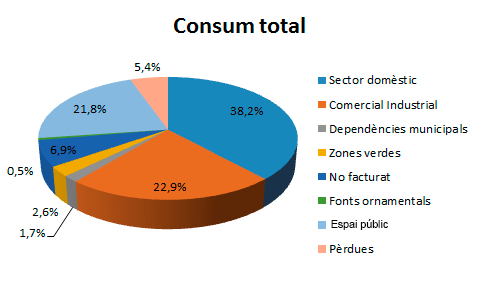
Total water consumption for different needs (2012). Source: Barcelona Regional
Analysing the evolution of the main water consumption sectors (domestic and commercial/industrial and municipal) shows a reduction in drinking water consumption in all these sectors. But especially noteworthy is the 17% reduction in the domestic sector, where, over the years, the raising of awareness among the population has played a very important role, reaching a relatively low per capita consumption of about 107 litres per inhabitant and day during 2018 (the WHO establishes that the minimum required limit is 100 l/inhabitant/day). In this regard, one of the strategic goals of the Climate Plan for 2030 is to achieve a consumption of domestic drinking water of less than 100 l/inhabitant/day.

Evolution of Barcelona's water consumption by sector Source: Barcelona Regional

Evolution of domestic consumption per inhabitant and per day: Source: Barcelona Regional
Based on consumption weighted by type of housing, the following map shows the consumption per inhabitant per neighbourhood. Some neighbourhoods have a consumption well above the city average in terms of population, as is the case of the neighbourhoods of Pedralbes, Sant Gervasi-la Bonanova, Tres Torres, and Vallvidrera, el Tibidabo i les Planes However, the neighbourhoods with lower per capita consumption are mainly in the districts of Nou Barris, Sant Andreu, Horta-Guinardó and Sants.
Water consumption per inhabitant and per neighbourhood (l/inhabitant*day) Source: Barcelona Regional
Municipal powers
Barcelona City Council does not exercise power over drinking water supply directly, though it can take part in better water management in a general sense or in the event of a drought, by reducing superfluous municipal consumption or running campaigns and raising awareness among users. Together with the Generalitat de Catalunya, the City Council also acts as a health authority that monitors the quality of piped water through the Barcelona Public Health Agency (ASPB). Moreover, through the Environment and Urban Services - Urban Ecology and thanks to a grant from the ACA, the City Council is responsible for managing groundwater obtained from the city's subsoil for retail supply for permitted municipal purposes (supply without the use of entrance).
